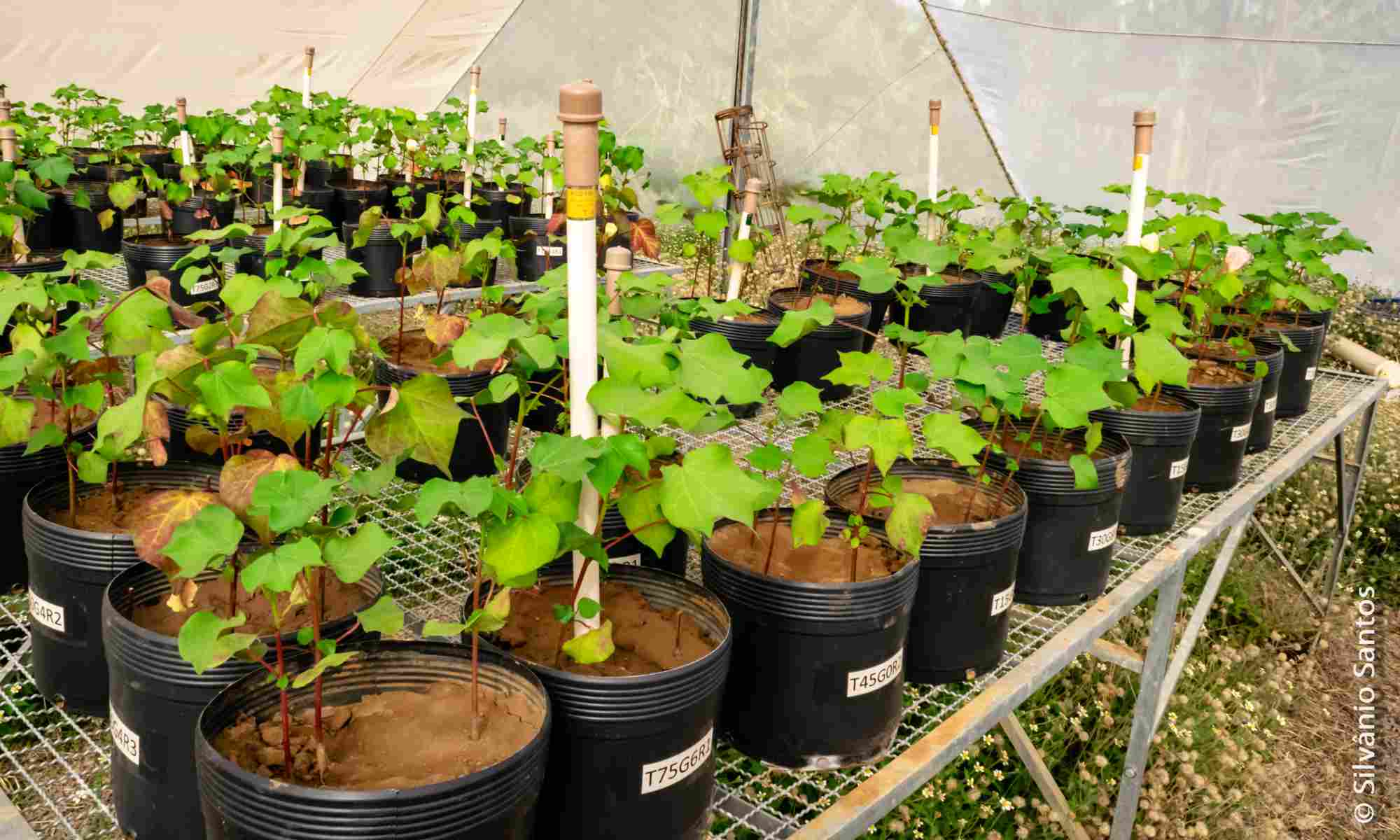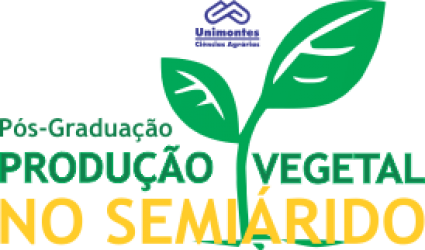- Version
- Download 11
- Tamanho do Arquivo 1.09 MB
- Data de Criação 11/06/2021
- Download
CAXITO, André Mendes. Desempenho agronômico e qualidade nutricional de silagens de sorgo biomassa, sacarino e forrageiro em região semiárida. 2017. 70 p. Dissertação (Mestrado em Produção Vegetal no Semiárido) – Universidade Estadual de Montes Claros, Janaúba, 2017.
Objetivou-se com este trabalho avaliar o desempenho agronômico e a qualidade nutricional de silagens de sorgos biomassa, sacarino e forrageiro, cultivados em regime de sequeiro na região semiárida de Minas Gerais. A pesquisa foi desenvolvida nas safras 2014/2015 e 2015/2016 nos municípios de Nova Porteirinha e Mamonas, na qual foram avaliados os sorgos biomassa BRS 716 e CMSXS 7016, os sorgos sacarinos BRS 506 e BRS 511 e os sorgos forrageiros BRS 655 e Volumax. O delineamento experimental foi em blocos casualizados com três repetições. A ocorrência de estiagens e a irregularidade temporal e espacial da precipitação influenciaram a produtividade de todos os genótipos de sorgo. Os genótipos BRS 716 e CMSXS 7016 apresentaram as maiores produções de matéria verde (PMV) e de matéria seca (PMS) em ambos os locais e safras. Na safra agrícola 2014/2015, a PMV foi de 81,74 t ha-1 (BRS 716) e 73,02 t ha-1 (CMSXS 7016) em Nova Porteirinha; e de 44,73 t ha-1 (BRS 716) e 45,50 t ha-1 (CMSXS 7016) em Mamonas. Na safra agrícola 2015/2016, a PMS foi de 40,97 t ha-1 (BRS 716) e 46,55 t ha-1 (CMSXS 7016) em Nova Porteirinha e de 39,74 t ha-1 (BRS 716) e 36,91 t ha-1 (CMSXS 7016) em Mamonas. Os genótipos do grupo biomassa apresentaram maior eficiência no uso da água (EUA) na safra 2014/2015 em ambos os locais. Em Nova Porteirinha, o genótipo BRS 716 apresentou valor médio de 82,51 kg MS ha-1 mm-1 e em Mamonas, o genótipo CMSXS 7016 apresentou valor médio de 43,91 kg MS ha-1 mm-1. Na safra 2015/2016, os genótipos BRS 716 e CMSXS 7016 apresentaram maior EUA em Nova Porteirinha, com valores médios de 17,18 e 21,84 kg MS ha-1 mm-1, respectivamente. Em Mamonas, não houve diferença significativa na EUA entre os genótipos analisados na safra 2015/2016. Não houve diferença significativa da interação safras, locais e genótipos, das variáveis químico-bromatológica: MM (10,85%), PB (7,91%), CNF (24,50%), FDN (56,91%), FDNcp (55,15%), FDA (32,72%), celulose (33,93%), hemicelulose (23,95%) e digestibilidade da matéria seca (79,13%). Os genótipos BRS 716 e CMSXS 7016 obtiveram maior produção de matéria seca digestível (PMSD) em ambos os locais e safras. Na safra agrícola 2014/2015, a PMSD foi de 20,60 t ha-1 (BRS 716) e 18,07 t ha-1 (CMSXS 7016) em Nova Porteirinha e de 13,45 t ha-1 (BRS 716) e 13,59 t ha-1 (CMSXS 7016) em Mamonas. Na safra agrícola 2015/2016, a PMSD foi de 5,82 t ha-1 (BRS 716) e 7,17 t ha-1 (CMSXS 7016) em Nova Porteirinha e de 9,17 t ha-1 (BRS 716) e 7,99 t ha-1 (CMSXS 7016) em Mamonas.
Palavras-chave: Sorghum, eficiência no uso da água, digestibilidade matéria seca
Agronomic performance and nutritional quality of biomass, saccharin and forage sorghum silage in the semi-arid region
This work was carried out to evaluate the agronomic performance and nutritional silages quality of biomass, saccharin and forage sorghum grown under rainfed agriculture in the semi-arid region of Minas Gerais. The research was developed in the 2014/2015 and 2015/2016 crops in Nova Porteirinha and Mamonas county, in which BRS 716 and CMSXS 7016 biomass sorghums, BRS 506 and BRS 511 saccharin sorghums and BRS 655 and Volumax forage sorghums were evaluated. The experimental design was in a randomized block with three replicates. The occurrence of droughts and the temporal and spatial irregularity of the precipitation influenced the productivity of all sorghum genotypes. The BRS 716 and CMSXS 7016 genotypes presented the highest yields of green matter (GM) and dry matter (DM) in both places and crops. In 2014/2015 crop, the GM yield was 81.74 t ha-1 (BRS 716) and 73.02 t ha-1 (CMSXS 7016) in Nova Porteirinha; and 44.73 t ha-1 (BRS 716) and 45.50 t ha-1 (CMSXS 7016) in Mamonas. In the 2015/2016 crop, the DM yield was 40.97 t ha-1 (BRS 716) and 46.55 t ha-1 (CMSXS 7016) in Nova Porteirinha, and 39.74 t ha-1 (BRS 716) and 36.91 t ha-1 (CMSXS 7016) in Mamonas. The biomass genotypes showed greater water use eficience (WUE) in the 2014/2015 crop in both places. In Nova Porteirinha, the BRS 716 genotype presented an average value of 82.51 kg DM ha-1 mm-1, whereas, in Mamonas, the CMSXS 7016 genotype had an average value of 43.91 kg DM ha-1 mm-1. In the 2015/2016 crop, BRS 716 and CMSXS 7016 genotypes showed higher WUE in Nova Porteirinha, with mean values of 17.18 and 21.84 kg DM ha-1 mm-1, respectively. In Mamonas, there was no significant difference in the WUE between the genotypes analyzed in the 2015/2016 crop. There was no significant difference in the interaction crops, places and genotypes, of the chemical-bromatological variables: MM (10.85%), CP (7.91%), NFC (24.50%), NDF (56.91%), NDFap (55.15%), AFD (32.72%), cellulose (33.93%), hemicellulose (23.95%) and dry matter digestibility (79.13%). The BRS 716 and CMSXS 7016 genotypes obtained the highest digestible dry matter (DDM) production in both locations and crops. In the 2014/2015 crop, the DDM production was 20.60 t ha-1 (BRS 716) and 18,07 t ha-1 (CMSXS 7016) in Nova Porteirinha; and 13.45 t ha-1 (BRS 716) and 13.59 t ha-1 (CMSXS 7016) in Mamonas. In 2015/2016 crop, DDM production was 5.82 t ha-1 (BRS 716) and 7.17 t ha-1 (CMSXS 7016) in Nova Porteirinha and 9.17 t ha-1 (BRS 716) and 7.99 t ha-1 (CMSXS 7016) in Mamonas.
Keywords: Sorghum, water use efficiency, dry matter digestibility

